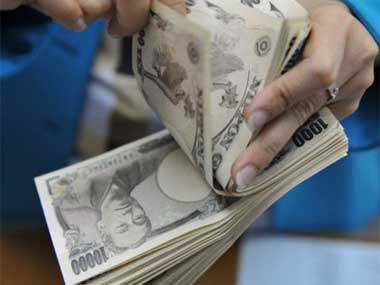Insanity is defined as doing the same thing over and over again and expecting a different result. The Japanese authorities fit this definition perfectly as they again intervened in the foreign exchange market in the week ended 5 November to depreciate the yen.
They are known for regular interventions in the free market to change the trend. Their interventions in the economy for the past 20 years with easy money and attempts to depreciate the yen have only resulted in the Nikkei falling from nearly 40,000 to 8,800 recently.
For the past one year, the Japanese have tried to depreciate the yen against the dollar with complete failure. The failure of the yen interventions should act as a lesson to other governments that changing trends in the free market is not easy.
[caption id=“attachment_123996” align=“alignleft” width=“380” caption=“For the past one year, the Japanese have tried to depreciate the yen against the dollar with complete failure. AFP”]
 [/caption]
[/caption]
The white arrows in the dollar-yen chart here show the times when the Japanese authorities intervened in the market and the consequent rally in the dollar. The white horizontal line shows the area where the interventions failed.
In September 2010, the authorities intervened when the dollar-yen pair was at 82.85, which resulted in the dollar rallying to 86. In an intervention, the Japanese sell the yen to depreciate it and buy the dollar. It stayed at 86 for less than a week and then began to fall and reached 76 during the earthquake in March 2011.
At that point, the Japanese intervened again and the dollar rallied over the next few weeks to go back up to 86, the place from where the pair had turned after the last intervention in September 2010. This time too the yen turned at 86.
The intervention of March 2011 was another failure as the pair again fell to 76 in August 2011, triggering another intervention. This time the intervention was less effective as the pair only went up to 80 - a whopping six points less than the previous intervention. The pair fell again to go lower to 75.55, before there was another intervention last week. This time the intervention led to rally to 75.50 before the pair began to go lower.
Not only have the interventions failed as the pair eventually goes lower than the previous low, but the interventions are giving diminishing returns. This is evidenced by the fact that rallies after the interventions have become weaker. Another factor that is hard to miss is that the time gap between interventions is becoming shorter.
The continued interventions have pumped a lot of yen into the market. However, the authorities are lucky. Given the fact that the Japanese economy has been in continuous deflation, inflation has not kicked in.
The appreciating yen is the free market’s response to the Japanese trade surplus and cannot be resolved by currency intervention. The Japanese currency is seen as a safe haven which increases demand for the yen. The only way for the yen to depreciate is by achieving trade balance, through open trade and greater imports. The Japanese have provided the world with great products leading to a trade surplus. Now it’s time for them to splurge.
The intervention has proven treacherous for many traders as they incur losses when the currency moves against them. However, the yen is expected to continue strengthening despite the periodic interventions.
George Albert is Editor, www.capturetrends.com
George Albert is a Chicago-based trend watcher and edits www.capturetrends.com
)